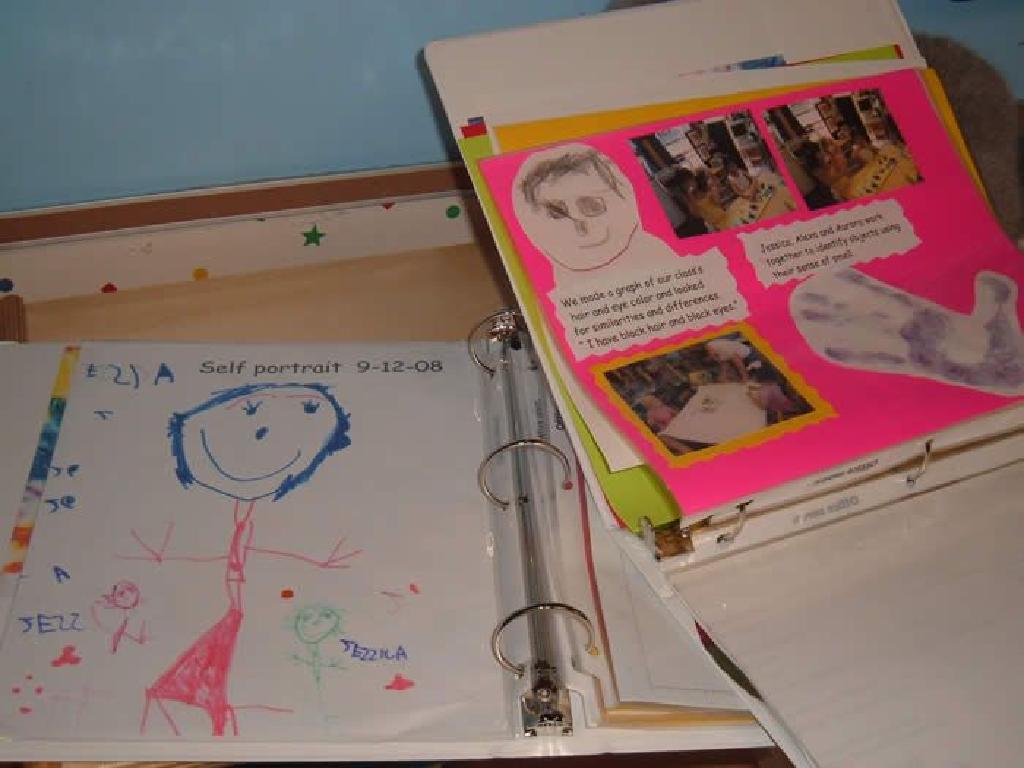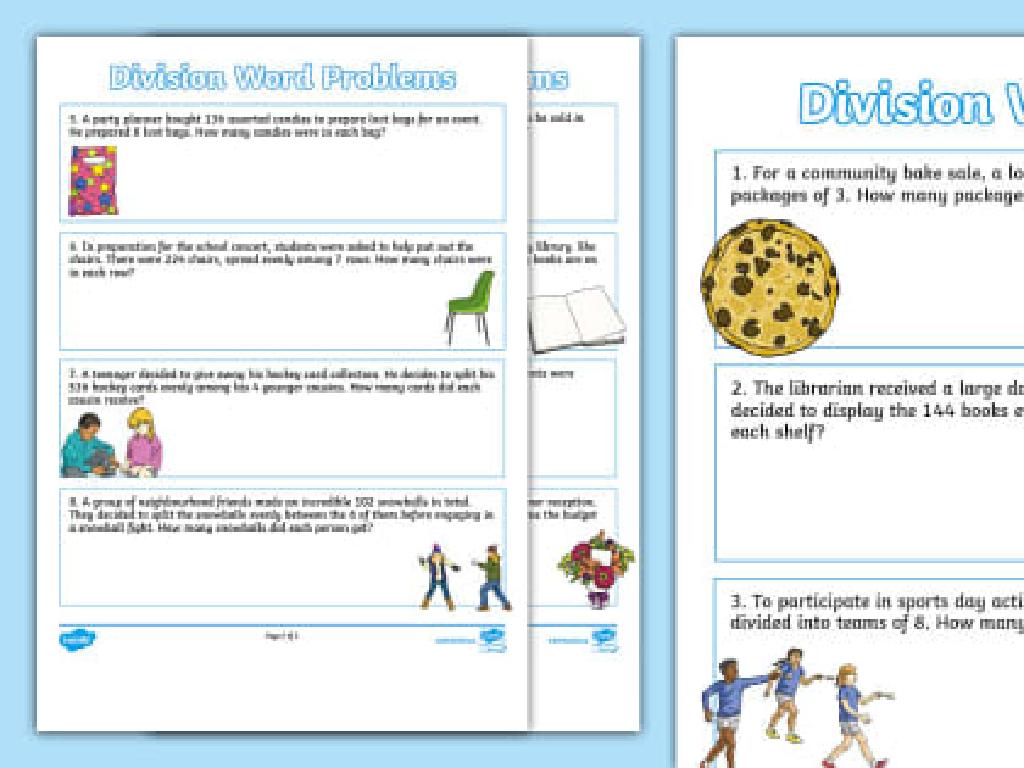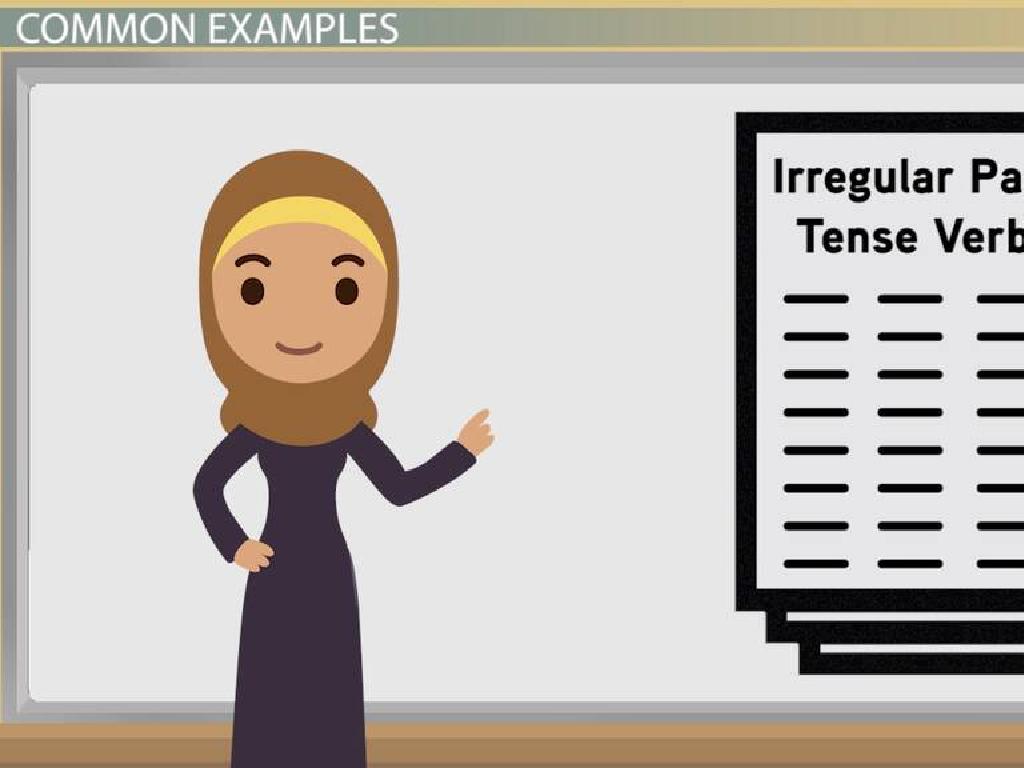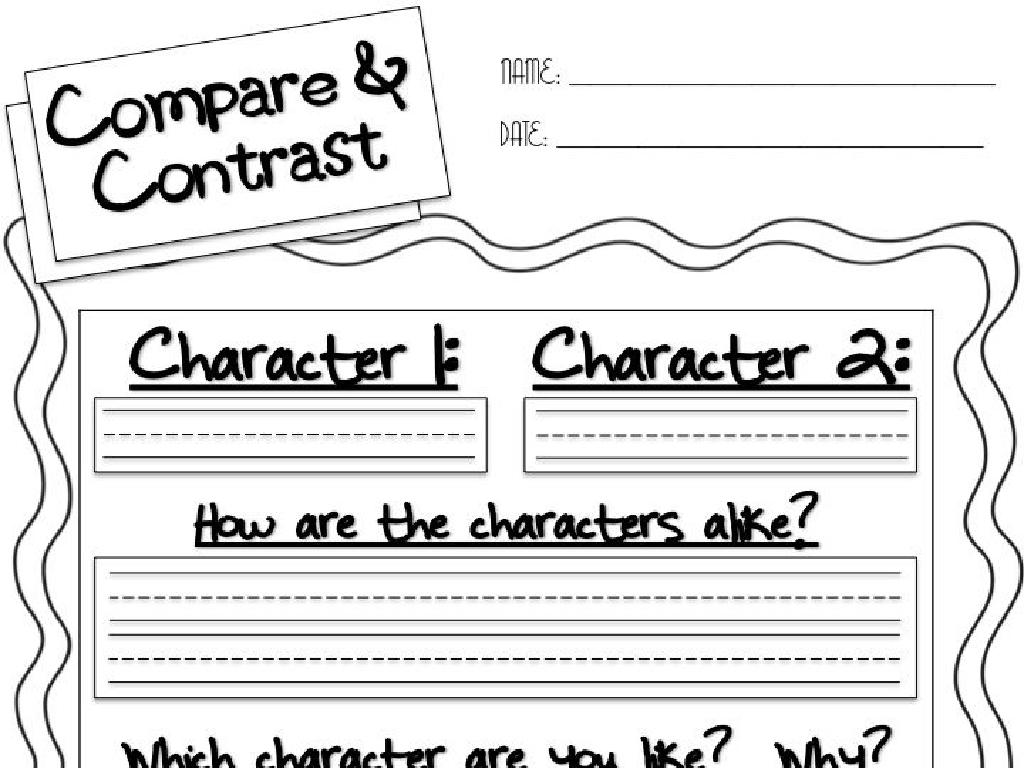Compare Concentrations Of Solutions
Subject: Science
Grade: Seventh grade
Topic: Solutions
Please LOG IN to download the presentation. Access is available to registered users only.
View More Content
Introduction to Solutions
– What are solutions?
– A solution is a mixture of substances that are evenly distributed.
– Types of solutions
– Solutions can be solid, liquid, or gas, like alloys, saline water, or air.
– Solutions in daily life
– Saltwater, soda, and brass are common examples we encounter.
– Exploring concentration
– Concentration measures how much solute is in a given volume of solvent.
|
Begin the lesson by defining a solution as a homogeneous mixture where substances are uniformly distributed. Explain that solutions can exist in different states: solid, liquid, and gas, providing examples for each, such as brass (solid), saline water (liquid), and air (gas). Discuss everyday solutions that students come across, like saltwater or soda, to make the concept relatable. Introduce the concept of concentration as a way to compare solutions based on the amount of solute in a given volume of solvent. This will set the foundation for understanding how different concentrations can affect the properties and uses of solutions in various contexts.
Concentration of Solutions
– Understanding Concentration
– Measure of how much solute is in a solvent
– Solute vs. Solvent
– Solute: substance dissolved; Solvent: does the dissolving
– Examples: Concentrated vs. Dilute
– Concentrated: more solute; Dilute: less solute
– Impact on Solution Properties
– Concentration affects taste, color, and reactivity
|
This slide introduces the concept of concentration in solutions, which is a fundamental topic in chemistry and essential for understanding various scientific processes. Concentration is defined as the amount of solute that is dissolved in a given quantity of solvent. It’s important to differentiate between solute and solvent to grasp this concept. Provide examples of everyday solutions that are concentrated (like syrup) and dilute (like tap water) to make the concept relatable. Discuss how varying concentrations can change the properties of a solution, such as its taste, color, and how it reacts with other substances. Encourage students to think of more examples and consider how concentration might affect those solutions.
Comparing Concentrations of Solutions
– Defining concentration
– Concentration refers to the amount of solute in a given volume of solvent.
– Color intensity as a clue
– Darker color often indicates a higher concentration.
– Measuring with a hydrometer
– A hydrometer measures the density of a solution compared to water.
– Using a refractometer
– A refractometer measures how light bends, or refracts, in the solution.
|
This slide aims to explain how to compare the concentrations of different solutions. Start by defining concentration as the amount of solute dissolved in a certain amount of solvent. Use visual aids to show how a more concentrated solution may appear darker or more intense in color. Introduce the hydrometer and refractometer as tools for more precise measurements. A hydrometer can be used to compare the density of the solution to that of pure water, while a refractometer measures the bending of light to determine concentration. Provide examples of each method and encourage students to think about why different concentrations might be important in various scientific and real-world applications.
Factors Affecting Solution Concentration
– Temperature’s role in solubility
– Higher temperatures usually increase solubility, affecting concentration
– Solvent volume impacts concentration
– Increasing solvent volume dilutes the solution, decreasing concentration
– Solute amount alters concentration
– Adding more solute increases concentration, while removing decreases it
|
This slide aims to explain the factors that can change the concentration of a solution. Temperature can affect how much solute can dissolve; typically, more solute can dissolve at higher temperatures, leading to a more concentrated solution. The volume of the solvent also plays a crucial role; adding more solvent to a solution will dilute it, thus reducing its concentration. Conversely, evaporating solvent concentrates the solution. The amount of solute is directly related to concentration; adding more solute increases concentration, assuming the solvent volume remains constant. Removing solute has the opposite effect. Use examples like making lemonade or saltwater to illustrate these concepts. Encourage students to think about how these factors play a role in everyday life, such as when adding sugar to tea or coffee.
Real-World Applications of Solution Concentration
– Concentration in cooking
– Recipes vary flavor strength with ingredient concentration
– Dosage in medicine
– Correct dosage is crucial for medicine effectiveness
– Pollution in environment
– Water pollution levels indicate environmental health
– Understanding concentration
|
This slide aims to illustrate the importance of understanding solution concentrations through real-world applications. In cooking, the concentration of ingredients directly affects the flavor strength of a dish, demonstrating how varying amounts can change the outcome. In medicine, the correct dosage, which is a specific concentration of active ingredients, is vital for the treatment to be effective and safe. Environmental science uses the concentration of pollutants in water to assess the health of ecosystems and the impact of human activities. Encourage students to think about how concentration plays a role in their daily lives and the broader world around them. This understanding is key to grasping the concept’s significance beyond the classroom.
Class Activity: Making Solutions
– Create solutions of varying concentrations
– Gather materials: salt, water, cups, spoons
– Safety is key: wear eyewear and gloves
– Protect your eyes and hands from splashes
– Observe changes in concentration
– Notice how solution clarity changes with more salt
|
In this hands-on class activity, students will learn about the concept of concentration by creating their own saltwater solutions. Provide each student or group with the necessary materials and guide them through the process of measuring and mixing to create solutions of different salt concentrations. Emphasize the importance of safety by ensuring all students wear protective eyewear and gloves throughout the activity. As they work, encourage students to observe and note how the appearance of the solution changes as more salt is added, linking these observations to the concept of saturation. After the activity, facilitate a discussion on how concentration affects various properties of a solution. Possible variations of the activity could include using different solutes like sugar or comparing the rate of dissolution with stirring versus without.
Experiment: Comparing Solution Concentrations
– Measure salt and water for a solution
– Make solutions with different salt amounts
– Use varying salt quantities to see changes
– Observe concentration differences
– Look for clarity, color, and saturation
– Record your observations
|
This slide outlines the steps for a class experiment on solution concentrations. Students will learn to create solutions by dissolving salt in water and then compare the concentrations by making observations. They should measure carefully and use consistent amounts of water for each solution to ensure a fair comparison. Observations might include changes in the solution’s clarity, color, or saturation. Students should record their findings in a table or chart, noting the amount of salt and the corresponding concentration level. This activity will help them understand the concept of solute concentration in a solution and how it affects the solution’s properties.
Discussion and Conclusion: Solution Concentrations
– Share observations with peers
– Identify the most concentrated solution
– Was it the color, viscosity, or amount of solute?
– Explain reasons for concentration differences
– Consider factors like solute quantity and volume
– Discuss real-life applications
– How does concentration affect cooking, medicine, etc.?
|
This slide aims to wrap up the lesson on solution concentrations by facilitating a class discussion. Students will share their observations, perhaps noting color changes or viscosity as indicators of concentration. They should use evidence from their experiments to identify which solution was the most concentrated and discuss the factors that led to this, such as the amount of solute dissolved in a given volume of solvent. Finally, encourage students to think about the importance of solution concentration in everyday life, such as in cooking recipes or the formulation of medicines. This will help them understand the practical implications of their findings and the relevance of science in daily activities.






